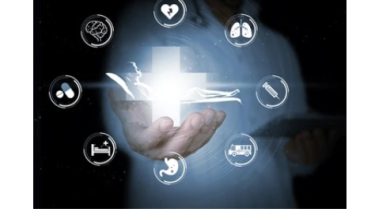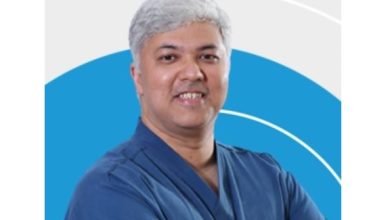
The high prevalence of both diabetes and sleep apnea is due to an unhealthy lifestyle. Dr Sunil Gupta,Diabetologist, CEO & MD, Sunil’s Diabetic Care n’ Research Centre, Nagpur gives an insight
Do you snore? Do you feel tired all the time and wake up frequently throughout the night? Do you also have to maintain your sugar levels? Then attention is required and fast!
Diabetes and Obstructive Sleep Apnea (OSA), one of the most critical sleep disorders, are among India’s most common health problems. With over 77 million adults with Type 2 Diabetes Mellitus (T2DM), India is the second globally in impact, which can rise to 134.2 million by 2045.
Moreover, as per the Lancet Respiratory Medicine report, over 9.6 per cent of the Indian population suffers from sleep apnea. This high prevalence of both diabetes and sleep apnea is due to an unhealthy lifestyle, obesity, irregular sleep schedules and high stress found in most Indians. While these causes are known, what is relatively unknown is the direct relationship between these two disorders. Clinical studies have shown that around 48 per cent of people diagnosed with Type 2 diabetes have associated sleep apnea, and researchers believe that this figure can go up to 86 per cent. These disorders pose a significant threat and constitute a decisive risk factor for cardiovascular diseases, one of India’s leading causes of morbidity.
Given the enormous public health burden, it is essential to understand the relationship to introduce better clinical practices. In India, the current guidelines to manage T2DM do not even include the evaluation of OSA. Research Society for 32 November 2021 The Study of Diabetes in India (RSSDI), a leading scientific society, recently collaborated with sleep specialists to recognise this relationship and develop clinical practice recommendations that provide evidence-based guidance to researchers, patients, clinicians, public health policymakers, and other stakeholders for the screening, diagnosis, and treatment of OSA in patients with T2DM. The consensus published in the International Journal of Diabetes in developing countries (IJDDC) has found increasing evidence that OSA is associated with the risk of T2DM and CVD complications, resulting in a significant socioeconomic burden. Over 50 per cent of T2DM patients likely suffer from sleep disturbances, and of these, up to one third who are severely affected may require treatment.
The relationship between OSA and T2DM
To understand the relationship between sleep apnea and diabetes, we need to be familiar with two medical terms i.e., glucose intolerance and insulin resistance. OSA is known to cause sleep fragmentation and intermittent hypoxia, leading to an increase in oxidative stress, higher circulation of inflammatory cells, sympathetic activation and an increase in a hormone called leptin. All these, in turn, cause insulin resistance, which is why T2DM manifests. Under such circumstances, our body cells cannot absorb blood glucose efficiently, resulting in higher sugar levels in our bloodstream. This phenomenon is known as glucose intolerance.
The second correlation to justify the relationship between sleep apnea and diabetes is that when the upper airway of our neck is closed (as in the case of sleep apnea), the amount of carbon dioxide rises in our bloodstreams (since there is no passage of air) causing insulin resistance, which eventually leads to the bloody sugar levels rising. The symptoms may include morning headaches, daytime sleepiness, and in much more severe cases, can cause cardiovascular diseases and may even impact the brain. Additionally, since OSA leaves you drowsy during the day and reduces your productivity, you feel demotivated to exercise, further pushing obesity and increasing the chances of diabetes. Prolonged inactiveness and reduced productivity are shared symptoms of both OSA and T2DM.
The need for awareness around sleep disorders and sleep hygiene
The National Health Policy of India, revised in 2017, does not address the critical issue of the requirement of sufficient sleep for the population, which may influence the public health statistics of India. A comprehensive national sleep policy is a need of the day and an understanding of the diagnosis of sleep disorders. We need to have appropriate infrastructure for adequate sleep tests and sleep studies for that. A national campaign about the benefits of healthy sleep hygiene is crucial. The evidence and research presented above do not imply that we will have OSA if we suffer from T2DM or vice versa. However, such overlapping symptoms increase the chances of a patient suffering from one developing the other. This means that we must pay close attention to the risk factors of diabetes if we are suffering from sleep apnea and make sure that we are doing everything we can to get a night of healthy sleep if we are diabetic.
Screening recommendations
As per the RSSDI consensus, all patients with diabetes must be screened for sleep apnea and vice versa. Since sleep testing in labs (Polysomnography) is expensive, clinicians can use STOP and STOP-Bang questionnaires to detect mild, moderate, and severe OSA in clinical settings. Home-based testing for sleep apnea using portable remote monitoring can be used as alternatives. Testing sleep-disordered breathing using level three mobile devices may expedite diagnosis and lower costs compared to lab tests.
Patients who display signs of both OSA and T2DM are at an increased risk of cardiovascular diseases. These
patients must undertake lifestyle modifications such as monitored diet and regular exercise, healthy sleep
hygiene and weight management. In slightly severe cases, patients must resort to pharmacotherapy and
medical management, including CPAP (Continuous Positive Airway Pressure) devices and surgical interventions if needed. CPAP treatment for OSA can improve glycaemic control and insulin resistance and thus improve diabetic conditions of patients.




